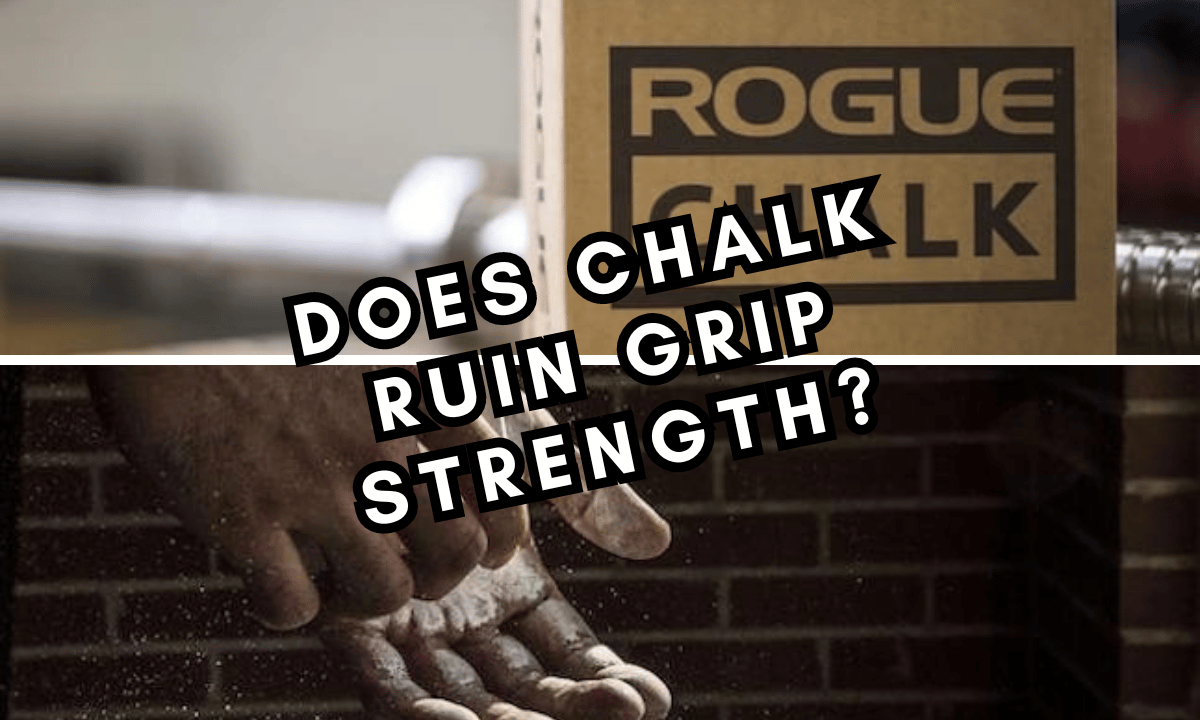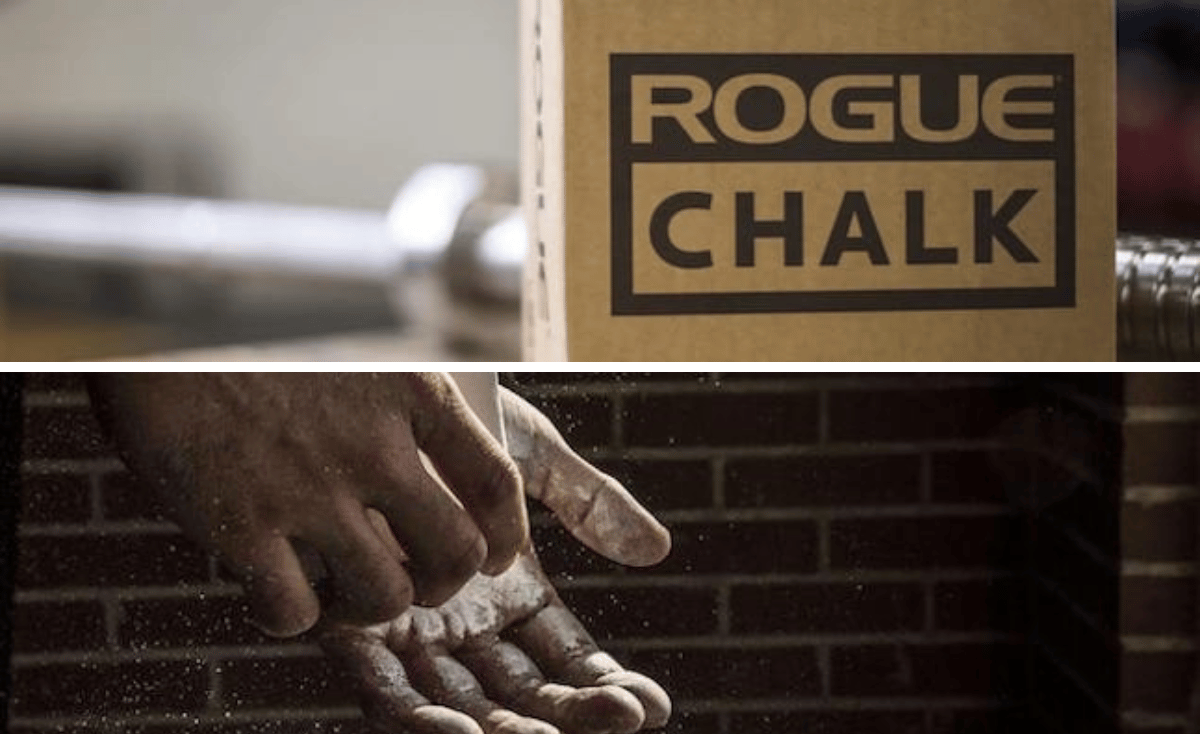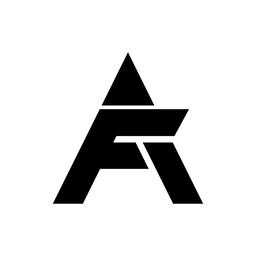Gym chalk - a simple yet powerful tool that can significantly improve your performance and safety during workouts. Whether you’re a seasoned weightlifter, an avid rock climber, or a passionate gymnast, gym chalk can be your secret weapon for maximizing grip and preventing injuries.
But what exactly is gym chalk, and what is gym chalk used for? In this comprehensive guide, we’ll answer these questions and more, exploring the science behind gym chalk, its different types, and how it can benefit various sports and exercises.
Key Takeaways
- Gym chalk is an essential tool for athletes to improve grip strength, reduce hand fatigue and prevent injuries.
- Different types of gym chalk offer varying levels of performance benefits and drawbacks. Liquid chalk is the most convenient option.
- Gym policies should be followed when using gym chalk, including cleaning up after use to maintain a safe environment for all users.
Understanding Gym Chalk
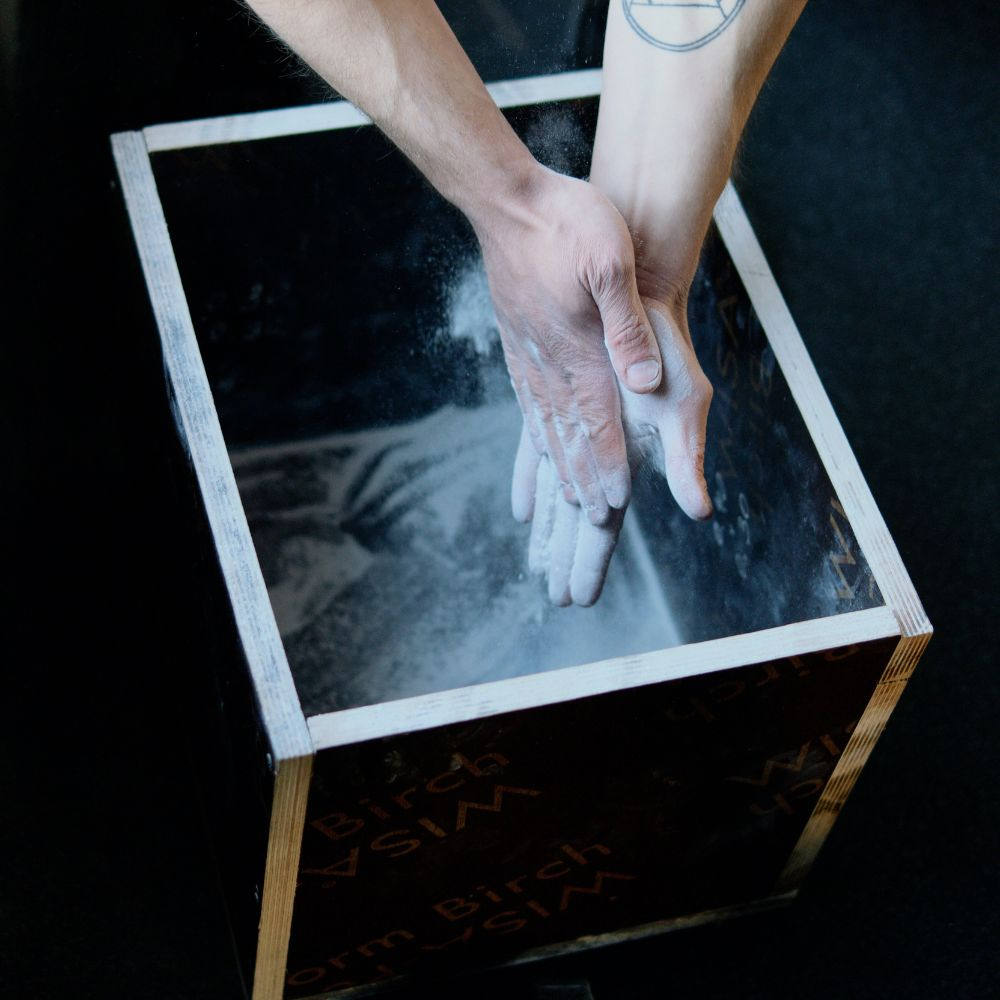
Gym chalk, also known as lifting chalk or gymnastics chalk, is a moisture-absorbing and grip-enhancing substance commonly used in sports that require a solid grip.
The primary component of gym chalk is magnesium carbonate, which is highly effective in absorbing sweat and providing a better grip on equipment, such as barbells, dumbbells, and gymnastics apparatuses.
Available in various forms, including powder chalk, liquid chalk, and gym chalk blocks, this versatile product is widely embraced by athletes seeking to improve their grip strength and overall performance.
Magnesium Carbonate
Magnesium carbonate, the key ingredient in gym chalk, offers several advantages for athletes. It absorbs moisture, keeping your hands dry and protected without the caking of lower-quality solid chalks.
Furthermore, magnesium carbonate ensures the necessary friction required for providing athletes with the control they need during their activities, such as lifting, climbing, or throwing.
Whether in powder, liquid, or block form, magnesium carbonate-based gym chalk remains a popular choice for those looking to enhance their grip and optimize their performance.
Regular Chalk vs. Gym Chalk
Distinguishing between regular chalk and gym chalk is vital due to their differing compositions and purposes. Regular chalk, primarily composed of calcium carbonate, is a soft, white, porous sedimentary rock formed from the remains of marine organisms.
In contrast, gym chalk is made of magnesium carbonate, which is known to be a safer and more effective option for grip enhancement. By using gym chalk specifically designed for athletic endeavors, you can ensure a secure grip, more powerful heavy lifts, and improved training.
The Importance of Grip Strength
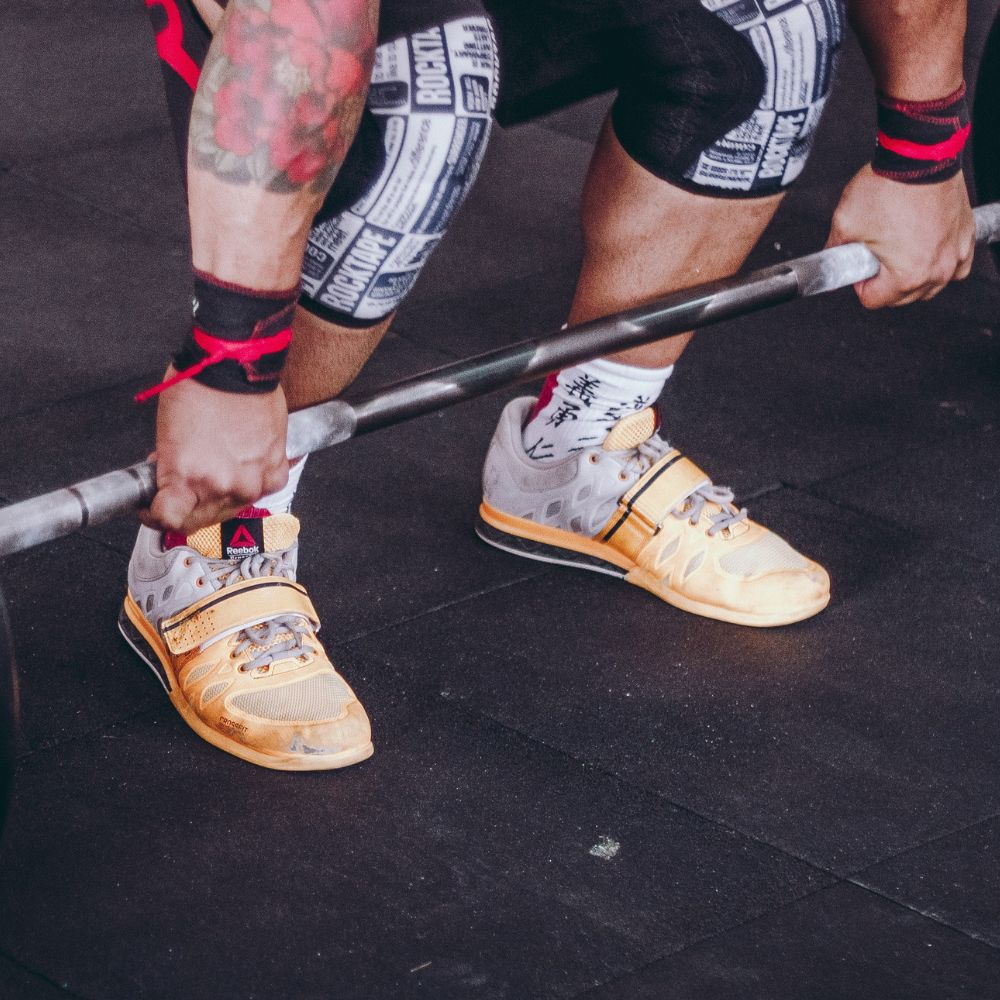
Grip strength plays a vital role in various sports and exercises, from weightlifting and powerlifting to gymnastics and rock climbing. A strong grip allows athletes to perform more repetitions, lift heavier weights, and ultimately achieve improved results in their chosen discipline.
Gym chalk can significantly enhance grip strength by absorbing sweat and moisture, enabling a firmer hold on equipment and reducing the risk of injury caused by slipping or improper technique.
Additionally, gym chalk can help improve concentration during workouts by minimizing distractions caused by sweaty hands.
Reducing Hand Fatigue
One of the key benefits of gym chalk is its ability to reduce hand fatigue during workouts. By absorbing sweat and enhancing grip, gym chalk helps minimize the strain on your hands, allowing you to focus more on your performance and less on maintaining a secure grip.
The scientific explanation for this lies in magnesium carbonate’s effectiveness in drying the hands and increasing friction between the hands and equipment, thereby preventing slipping and reducing hand fatigue during workouts.
Ultimately, gym chalk enables you to push your limits, reduce hand fatigue, and make the most of your training sessions.
Preventing Injuries
Gym chalk is not only crucial for enhancing grip strength but also for preventing injuries. A secure grip minimizes the risk of uncontrolled weights causing accidents during weightlifting and other sports.
By providing enhanced grip, gym chalk reduces the likelihood of injuries resulting from slipping or incorrect technique, which can have long-term consequences.
A study by NT Bacon et al. found that gym chalk improved both open-handed and pinch grip repetitions, indicating a beneficial relationship between grip strength facilitated by gym chalk and performance advancement.
How to Use Gym Chalk Effectively
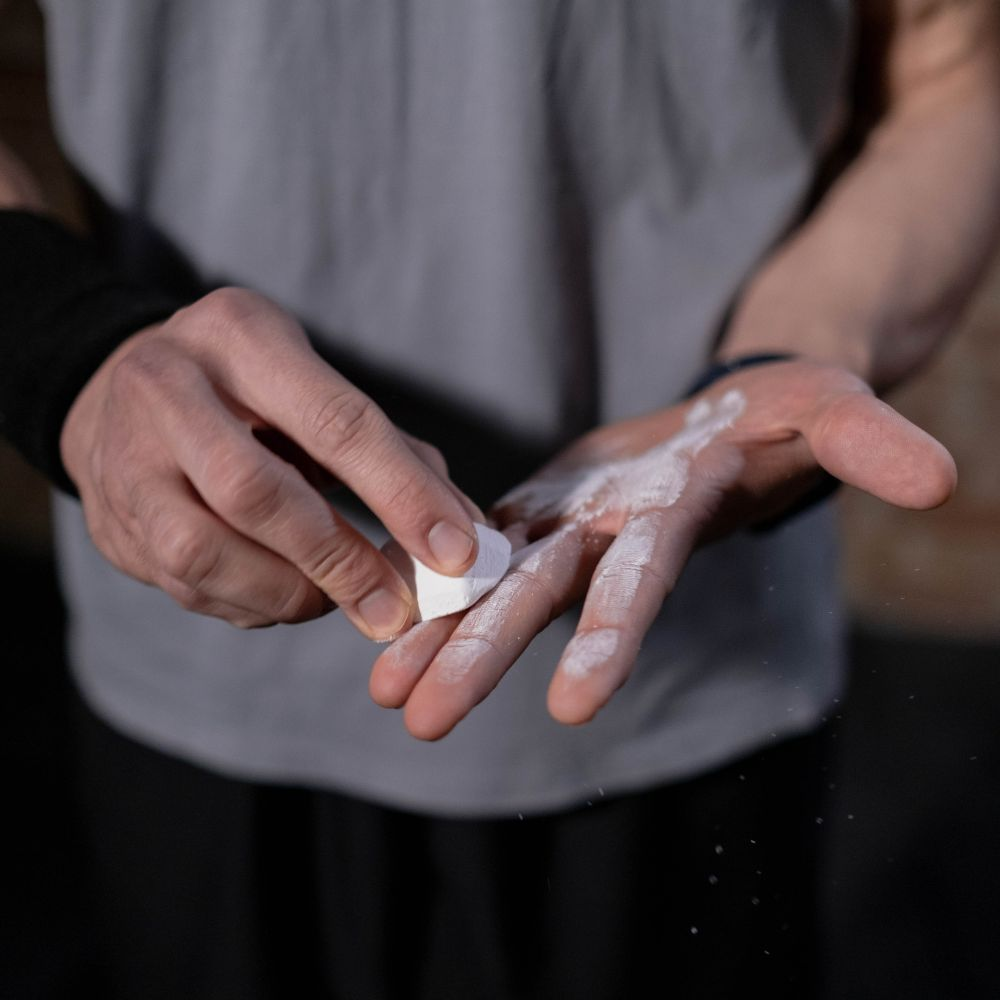
Knowing how to apply gym chalk properly and manage chalk dust effectively is key to maximizing its benefits. Generously coating your hands, wrists, and forearms with chalk before each performance helps absorb moisture and maintain a firm grip.
However, finding the right balance between adequate grip and overuse is crucial, as using too much chalk may cause unnecessary mess and waste.
In the following sections, we’ll provide some tips on applying gym chalk and handling chalk dust for optimal results and safety.
Applying Chalk to Hands
The proper application of gym chalk can significantly improve grip and performance. To ensure a secure grip, follow these steps:
- Lightly drag a block of chalk on each finger from top to bottom and across the palm, creating a light dusting of chalk that is barely visible.
- Repeat this process before each lift.
- Remember to use only the necessary amount of chalk to avoid excessive mess and waste.
Correct application of gym chalk effectively minimizes hand fatigue, enhances grip strength, and prevents injuries during workouts.
Chalk Dust and Air Quality
Despite gym chalk’s numerous benefits, awareness of its potential impact on air quality is essential. Chalk dust can cause respiratory issues, coughing, wheezing, and breathing difficulties for those predisposed to respiratory conditions.
To minimize the impact of chalk dust on air quality, consider using liquid chalk instead of traditional chalk powder, as it does not create any dust in the air. Additionally, take measures to reduce the amount of chalk dust in the air by:
- Using vinegar-based floor cleaners
- Utilizing chalk balls or a chalk bag with a chalk barrier
- Rubbing hands together to prevent chalk from dispersing in the air.
Types of Gym Chalk: Pros and Cons
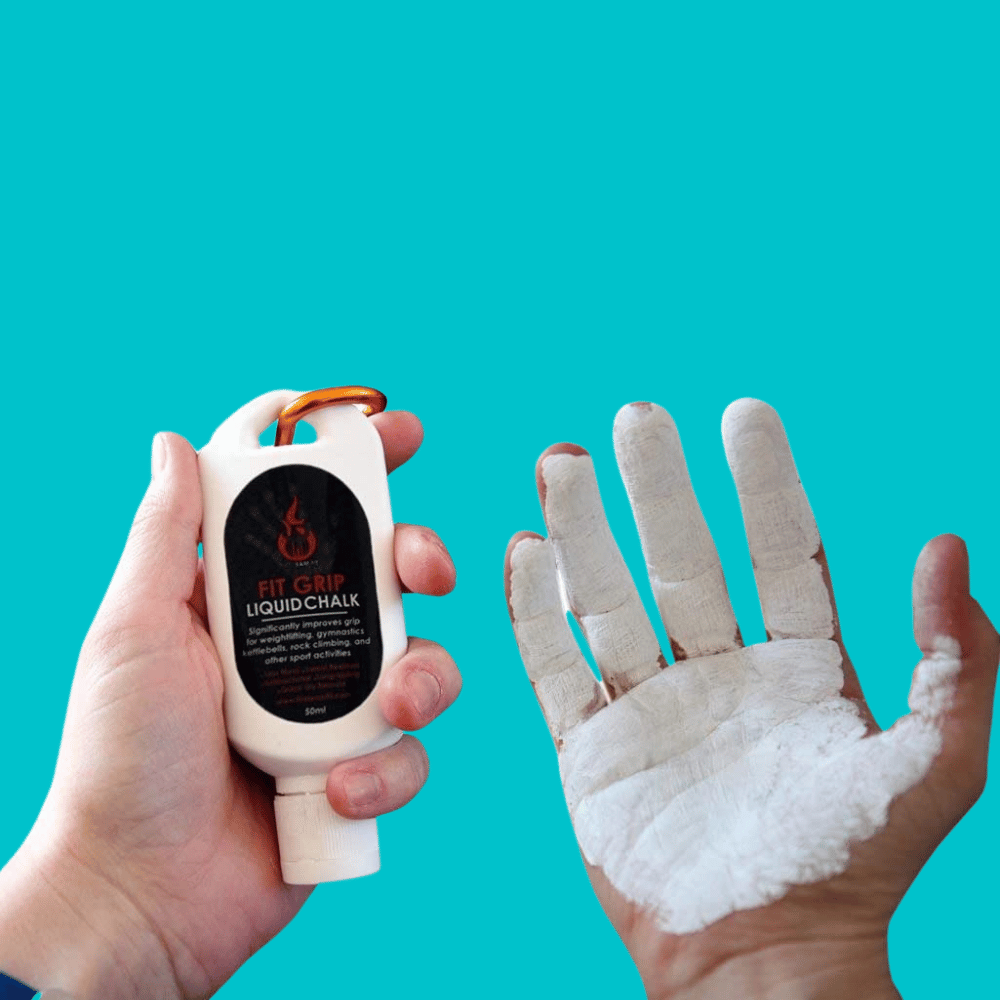
Several types of gym chalk are available, each with unique pros and cons. Powder chalk is the most common and usually the most cost-effective option, but it can be messy and may affect air quality. Liquid chalk, on the other hand, is more expensive but provides a more complete coverage and is less messy.
Block chalk, a form of solid chalk, is an economical choice that provides a good grip, although it can be challenging to transport and apply chalk evenly.
In the following sections, we’ll discuss each type of gym chalk in more detail to help you decide which is best for your needs.
Powder Chalk
Powder chalk, also known as loose chalk, is a popular form of gym chalk, known for its effectiveness in enhancing grip and reducing sweat. However, it can also be quite messy and may have an impact on air quality.
While it may not be the best option for those with respiratory issues or concerns about air quality, many athletes find powder chalk to be an invaluable tool in their training regimens. If you decide to use powder chalk, be prepared to clean up any mess it may create and consider using a chalk bag to minimize dust in the air.
Liquid Chalk
Liquid chalk is a suspension of chalk powder in alcohol that provides a convenient and less messy alternative to powder chalk. Applied as a liquid, it quickly dries into a smooth, even coating on the hands, offering enhanced grip and minimized sweat.
While it may not be as effective as traditional chalk when dried and may require frequent reapplication, liquid chalk is an excellent option for those looking for a cleaner alternative to powder chalk or in settings where traditional chalk is not allowed.
Block Chalk
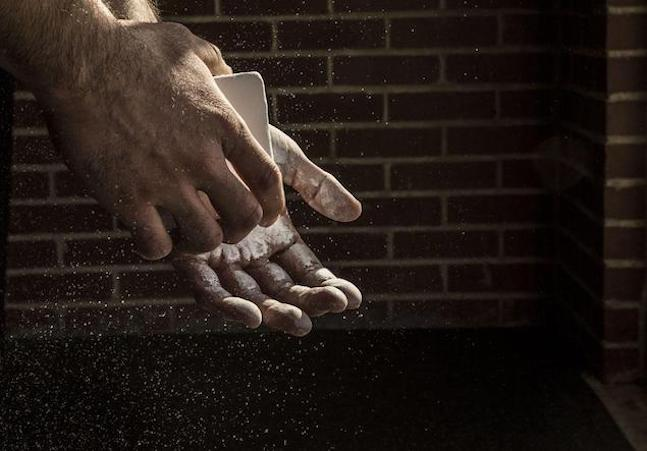
Block chalk, also known as gym chalk block, is the original form of lifting chalk, known for its effectiveness and economical value. It provides a substantial amount of chalk at an affordable price, making it a popular choice for athletes across various disciplines.
However, block chalk can be difficult to transport and apply evenly, as it requires breaking or crumbling the block into a usable form. Despite these challenges, block chalk remains a reliable and cost-effective option for enhancing grip and reducing sweat during workouts.
Gym Chalk in Different Sports
Various sports utilize gym chalk to enhance grip and performance. From weightlifting and powerlifting to gymnastics and rock climbing, athletes rely on gym chalk to reduce sweat, improve grip, and make their activities more comfortable and safe.
In each of these sports, gym chalk plays a crucial role in ensuring that athletes can maintain a secure grip on their equipment and prevent slips or injuries.
Exploring how gym chalk is used in specific sports will help to understand its importance and applications across different disciplines.
Weightlifting and Powerlifting
For weightlifters and powerlifters, gym chalk is essential for maintaining a strong grip on the barbell during lifts. By absorbing sweat and moisture, gym chalk enables athletes to:
- Lift heavier weights without the concern of their grip failing
- Focus on their performance
- Minimize the risk of injury caused by uncontrolled weights or slipping during lifts.
In short, gym chalk is a critical tool for weightlifters and powerlifters, helping them achieve their goals and push their limits.
Gymnastics
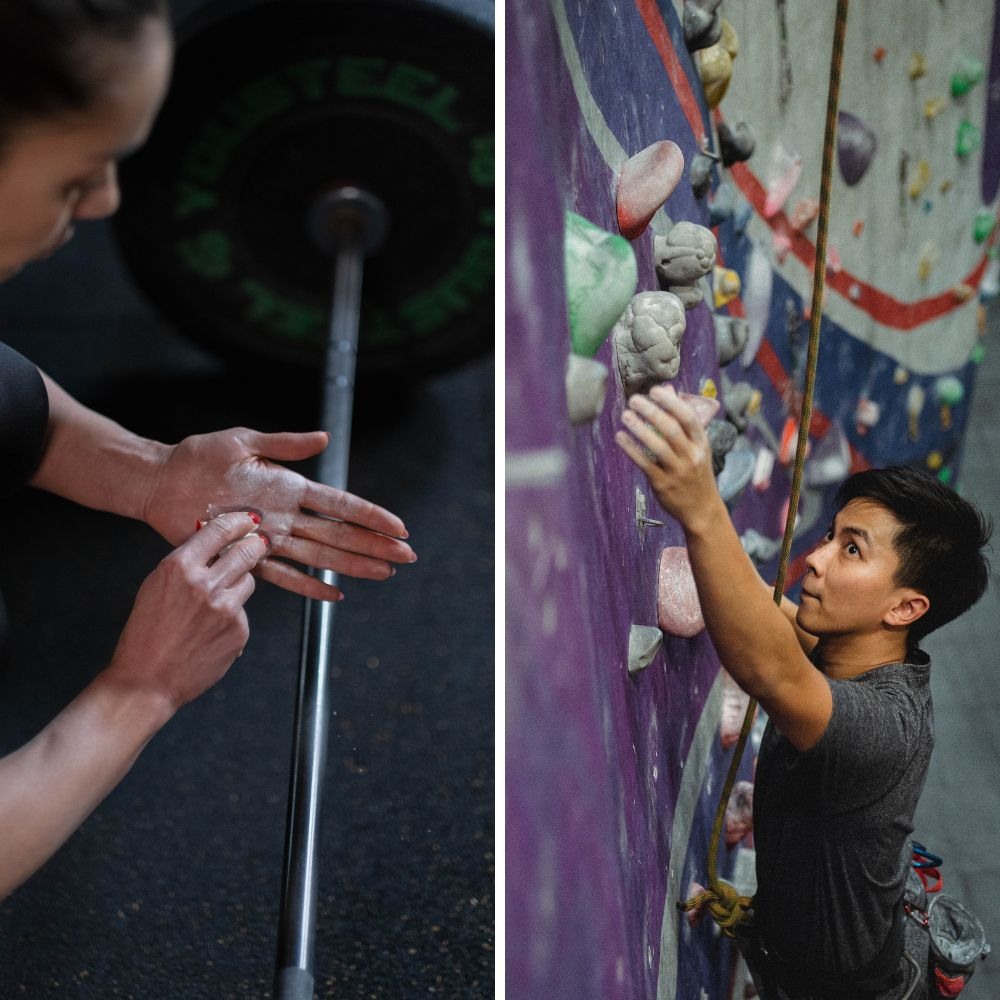
In gymnastics, gym chalk plays a vital role in ensuring a secure grip on apparatuses such as parallel bars and rings. By absorbing sweat and moisture, gymnasts can maintain a firm grasp on these apparatuses, minimizing slippage during their routines and reducing the risk of injury.
Additionally, gym chalk allows for smoother hand rotations around the bars, further enhancing performance quality. For gymnasts, gym chalk is an indispensable tool that enables them to perform their routines with confidence and precision.
Rock Climbing
Rock climbers rely on gym chalk to:
- Maintain a reliable grip during climbs
- Prevent slipping
- Increase friction between the climber’s hands and the climbing holds
- Absorb sweat and moisture
- Allow climbers to maintain a better grip on the rock
To apply gym chalk for rock climbing, simply rub it into your hands to create a dry surface, preventing slippery hands and allowing for more effective climbing. For rock climbers, gym chalk is an essential tool that helps them conquer even the most challenging routes with confidence.
Alternatives to Gym Chalk
Although gym chalk effectively improves grip strength, it may not be suitable or permitted in certain situations. For those who cannot or prefer not to use gym chalk, there are other alternatives to consider, such as weight lifting gloves and lifting straps.
These options can provide a similar level of grip enhancement and support during workouts, without the potential mess or air quality concerns associated with gym chalk.
Exploring these alternatives and discussing their respective benefits and drawbacks offers a comprehensive perspective.
Weight Lifting Gloves

Weight lifting gloves can provide an alternative to gym chalk for enhancing grip and protecting hands during workouts. By offering a solid foundation of support around the wrists, ensuring comfort when lifting weights, and safeguarding the hands from the abrasion and pounding of metal bars, weight lifting gloves can help athletes achieve a stronger grip without the need for gym chalk.
However, it is essential to consider the pros and cons of using gloves, as some experts believe they may interfere with the proper grip and form, especially for those with sweaty palms.
Ultimately, it’s important to weigh the benefits and drawbacks of gloves against those of gym chalk to determine which option is best for you.
Lifting Straps
Lifting straps can help improve grip strength and support during heavy lifts, especially for those with weaker grip strength. Constructed of strong, durable material, lifting straps feature a loop that goes around the wrist and a loose end that is wrapped around the barbell or dumbbell, providing a secure connection between the lifter’s hand and the weight. To lift safely, it’s essential to use these straps correctly.
This helps to reduce the strain on the grip muscles, allowing the lifter to focus more on the targeted muscles being worked. Lifting straps can be a valuable alternative to gym chalk for those who cannot or prefer not to use it during workouts.
Gym Chalk Etiquette and Rules
Maintaining a clean and safe environment for all gym-goers necessitates understanding and following gym chalk etiquette and rules. Proper gym chalk usage involves respecting gym policies, cleaning up after use, and being mindful of the potential impact of chalk dust on air quality.
By adhering to gym etiquette and rules, you demonstrate respect for the facility, fellow gym-goers, and the equipment you use.
Providing some tips on respecting gym policies and cleaning up after using gym chalk ensures a pleasant workout environment.
Respecting Gym Policies
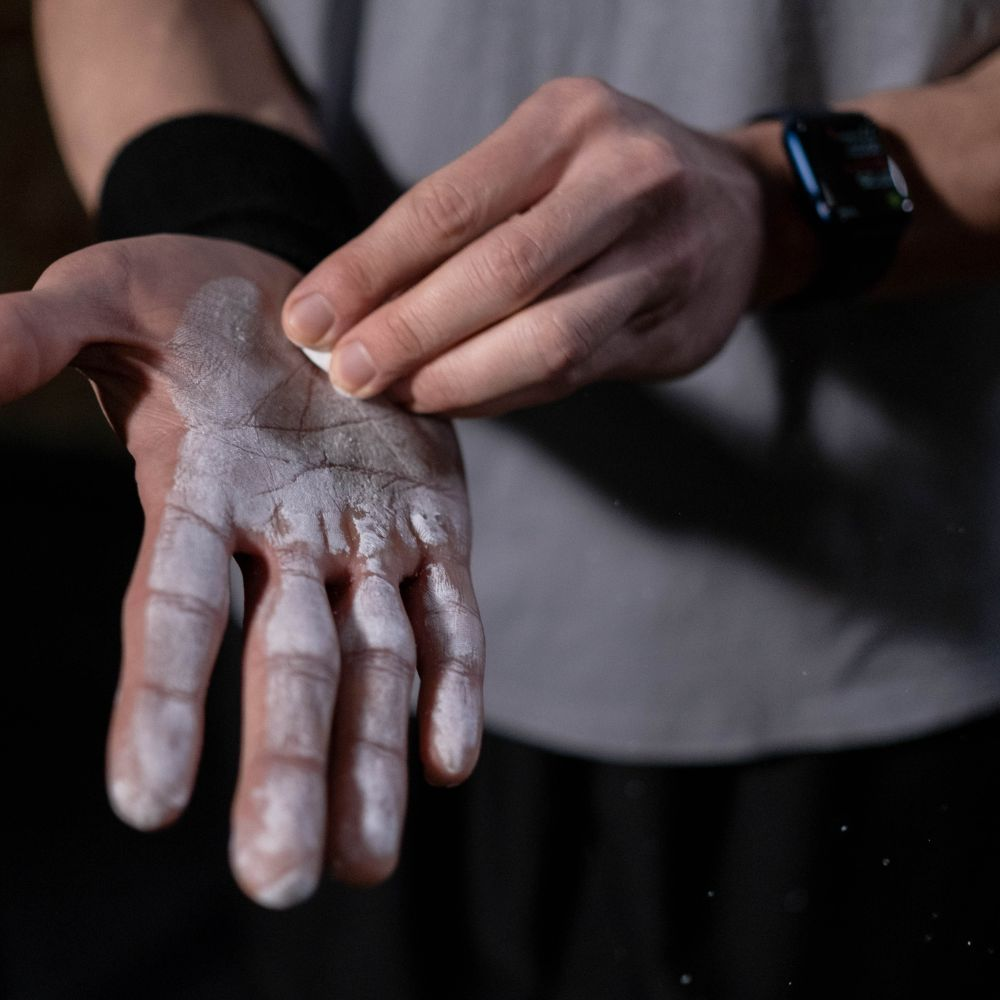
When using gym chalk, it’s important to be aware of and adhere to your gym’s policies. Some gyms may have specific regulations against the use of chalk due to hygiene considerations or concerns about equipment damage.
Before using gym chalk, consult with the relevant authorities at your gym to be aware of their policies and ensure that you’re complying with them. By following gym policies, you can maintain a safe and clean environment for all gym-goers and avoid potential conflicts or penalties.
Cleaning Up After Use
Properly cleaning up after using gym chalk is essential for maintaining a tidy and safe gym space. After your workout, use a damp cloth or a vinegar-based floor cleaner to remove any chalk residue from the equipment and surfaces.
Additionally, ensure that you properly dispose of any used gym chalk by checking with your local recycling center or storing it in a ziplock bag or plastic container for future use.
By taking the time to clean up after using gym chalk, you can help maintain a clean and inviting environment for all gym-goers.
Summary
In conclusion, gym chalk is an indispensable tool for athletes seeking to improve their grip strength and overall performance in various sports and exercises. By understanding the science behind gym chalk, its different types, and how to use it effectively, you can maximize your grip, prevent injuries, and optimize your workouts.
Whether you’re a weightlifter, gymnast, or rock climber, gym chalk can be your secret weapon for unlocking your full potential and achieving your goals. So, go ahead and chalk up – it’s time to elevate your performance to new heights!
Frequently Asked Questions
What is the difference between chalk and gym chalk?
Gym chalk is made with magnesium carbonate, which is less irritating than the calcium carbonate used in regular chalk and is insoluble in water. This makes it a much safer option for use in gyms.
What does gym chalk feel like?
Chalk is incredibly fine and feels almost soft when held in the hand. It's often used in CrossFit gyms, a carryover from the rock climbing world.
How do you use gym chalk blocks?
When using gym chalk blocks, it is important to avoid clapping it as you would with regular chalk. Instead, pick it up and swipe it over your hands to provide a light coating of chalk. This ensures that you don't get chalk everywhere and makes for easy clean-up afterwards.
What is the primary component of gym chalk?
Gym chalk is primarily composed of magnesium carbonate, which helps provide a better grip by absorbing sweat.
How does gym chalk help prevent injuries during workouts?
Gym chalk increases grip strength and reduces the chance of slips, providing a safe environment for exercising and helping to prevent injuries.
